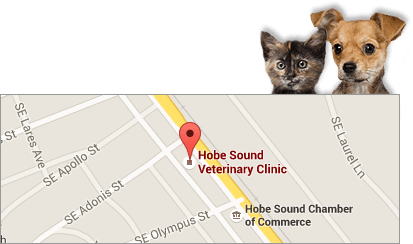Understanding how dogs cool themselves is essential for keeping your furry friend safe and comfortable during hot weather. While we rely on sweating to lower body temperature, a dog’s cooling process is different. Our canine companions have limited sweat glands, primarily located in their paw pads, so they rely heavily on panting to release excess heat. As air flows over the moist surfaces of the tongue and respiratory tract, water evaporates and disperses warmth. Additionally, dogs adjust their blood flow to the ears and face to help regulate temperature. Recognizing these heat-reducing mechanisms can help pet owners ensure their dog stays hydrated and well-ventilated, especially on scorching days. This article explores how dogs cool themselves by examining the science behind panting, shedding, and body positioning. By understanding these natural cooling strategies, you can better spot early warning signs of heat-related issues and keep your best friend healthy all year long.
The human body cools itself down during hot weather or vigorous exercise using one method: sweating. As the sweat on your skin evaporates, it cools you down. But your dog, of course, is covered in fur. So how do our canine companions’ bodies cool themselves in the summer months?
Panting
Panting is your dog’s primary way of cooling off. When your pup pants, moisture starts to evaporate from their tongue, as well as from the nasal passages and the lining of the lungs. Then, the air produced by panting passes over these moist tissues, effectively lowering your dog’s body temperature. It’s actually very similar to the way sweat evaporates off of our skin to cool us down!
Vasodilation
Have you ever noticed your dog’s face get a bit flushed and wrinkly when they’ve exercised in hot weather? That’s because of something called vasodilation. Vasodilation means that your dog’s blood vessels expand, or dilate. When Fido gets hot, blood vessels around the body expand and bring warm blood closer to the skin’s surface, where it cools down. Then, that cooler blood cycles back to the heart to lower your dog’s internal temperature.
Sweat Glands
Although dogs don’t sweat the way humans do, they do possess sweat glands. In fact, they have two types.
Merocrine glands are located in your dog’s paw pads, and start producing sweat when your dog gets hot in order to cool the body down. If these glands were located around the body, the sweat they produce would simply be absorbed by the fur, rendering it useless—that’s why they’re located in the paw pads.
Apocrine glands are located all over your dog’s body, but they don’t produce sweat in order to regulate body temperature. Instead, they release pheromones that dogs use to identify one another.
Keeping Fido Cool
No matter how dogs cool themselves, it’s your job to ensure they don’t overheat. Don’t leave your pet outdoors in hot, humid weather for long periods of time —bring him indoors frequently so he can cool off. And make sure that your pooch has plenty of fresh water to drink at all times. Water is essential for cooling the body down and preventing dangerous dehydration in hot weather! For more summertime pet care tips, check out our article on Summertime Pet Care Tips.
How Dogs Cool Themselves: Natural Mechanisms and Protective Measures
How does the blood vessel system in dogs’ paws work to regulate temperature?
Dogs rely on the blood vessels in their paws to help moderate body temperature. When a dog overheats, blood vessels in the paws dilate, bringing warm blood closer to the surface, where it can dissipate heat and return cooler blood to the body. This process is known as vasodilation. The unique arrangement of vessels in paw pads, combined with a thinner layer of fur, facilitates heat exchange with the environment. Though sweat glands in the paws assist cooling, the vasodilation mechanism is especially valuable in regulating a dog’s overall temperature.
What are the risks of sunburn for dogs and how can it be prevented?
Dogs, particularly those with short or light-colored coats, are susceptible to sunburn, which can lead to skin damage and increase the risk of skin cancer. Protection is crucial during peak sunlight hours. Applying pet-safe sunscreen to exposed areas like the ears, nose, and belly can prevent sunburn. Ensuring access to shade and using protective clothing designed for dogs can also safeguard their skin. It’s essential to avoid prolonged sun exposure and to provide plenty of water to keep dogs cool and hydrated during hot weather.
Why shouldn’t owners shave double-coated dogs in summer?
Shaving double-coated dogs in summer is not recommended because their layered fur serves as natural insulation. The undercoat and outercoat work together to regulate body temperature, protecting against both heat and UV exposure. Removing this protective layer can lead to overheating and sunburn, contrary to the common belief that shaving helps keep dogs cool. Additionally, shaving can damage the coat, causing it to grow back unevenly or not at all. To keep double-coated dogs comfortable in warm weather, regular brushing to remove loose undercoat is advised.
What are the benefits and proper use of cooling mats?
Cooling mats provide a beneficial way to regulate a dog’s body temperature during hot weather. These mats typically contain a gel or water-based core that absorbs and dissipates heat effectively. When a dog lies on the mat, the cool surface pulls heat away from their body, providing immediate relief and comfort. For optimal use, place the mat in a shaded, well-ventilated area to enhance its cooling effects. It’s essential to monitor the mat’s temperature and cleanliness regularly, ensuring it remains a safe and effective tool for heat management.
What are safe alternatives for physical activity in hot weather?
During hot weather, it’s crucial to adjust physical activities to keep dogs safe and cool. Early morning or late evening walks, when temperatures are lower, are ideal. Opt for shaded or grassy paths that won’t heat up like asphalt. Swimming offers excellent low-impact exercise that also helps to regulate body temperature. Indoor activities such as interactive puzzle games or hide-and-seek can keep a dog mentally stimulated and physically active without the risks associated with high temperatures. Always ensure ample water is available to prevent dehydration.
Would you like more tips for keeping your dog safe this summer? Give us a call today — we’re here to help.





